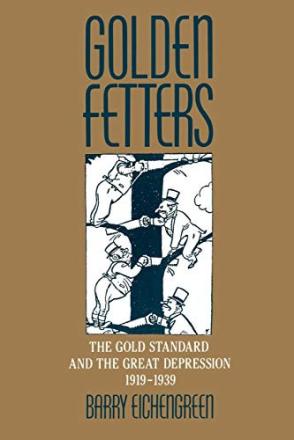Golden Fetters: The Gold Standard and the Great Depression, 1919-1939

The gold standard and the Great Depression might appear to be two very different topics requiring two entirely separate books, and the attempt to combine them here reflects Barry Eichengreen's conviction that the gold standard is the key to understanding the Depression. The gold standard of the 1920s set the stage for the Depression of the 1930s by heightening the fragility of the international financial system, and was the mechanism that transmitted the destabilizing impulse from the US to the rest of the world and magnified that initial destabilizing shock; it was the principal obstacle to offsetting action, and the binding constraint preventing policymakers from averting the failure of banks and containing the spread of financial panic. For all these reasons, the international gold standard was a central factor in the worldwide Depression. Recovery proved possible, for these same reasons, only after abandoning the gold standard.
The gold standard also existed in the nineteenth century, of course, without exercising such debilitating effects. The explanation for the contrast lies in the disintegration during and after World War I of the political and economic foundations of the prewar gold standard system. The dual bases for the prewar system were the credibility of the official commitment to gold and international cooperation: the credibility induced financial capital to flow in stabilizing directions, buttressing economic stability; the cooperation signaled that support for the gold standard in times of crisis transcended the resources any one country could bring to bear. Both were eroded by the economic and political consequences of the Great War, and the decline in credibility rendered cooperation all the more vital. When it was not forthcoming, economic crisis was inevitable.
The decline in both credibility and cooperation during and after World War I reflected a complex confluence of domestic and international political changes, and economic and intellectual changes. This book attempts to fit all these elements together into a coherent portrait of economic policy and performance between the wars. The goal is to show how the policies pursued, in conjunction with economic imbalances created by World War I, gave rise to the Great Depression. The argument is that the gold standard fundamentally constrained economic policies, and that it was largely responsible for creating the unstable economic environment on which the policies acted.


